ADT-based PDAS
After ADTs are created, you can apply the ADT to NetworkBrain Problem Diagnosis Automation System (PDAS), called ADT-based PDAS, which provides the following key values:
- Trigger ADT intents and deliver ADT maps in Triggered Automation Framework (TAF)
- Next-gen ADT-based Preventive Automation (PA)
- Intent replication for application path
- Troubleshoot network problems in NetworkBrain Bot based on ADT
The following diagram illustrates how ADT works in the PDAS system.
The ADT-based PDAS highlights the following two advantages:
- The intents in ADT are pre-replicated, and the intents cloned from the intent template are on-demand replicated.
- The intents in ADT are referenced to automation assets.
As the ADT-based PDAS system shows its main value in TAF and PAF, two diagrams are provided to illustrate how ADT-based PDAS works in TAF and PAF, respectively.
The following diagram illustrates how ADT-based PDAS works in TAF (see Install ADT in Triggered Automation Manager for more information):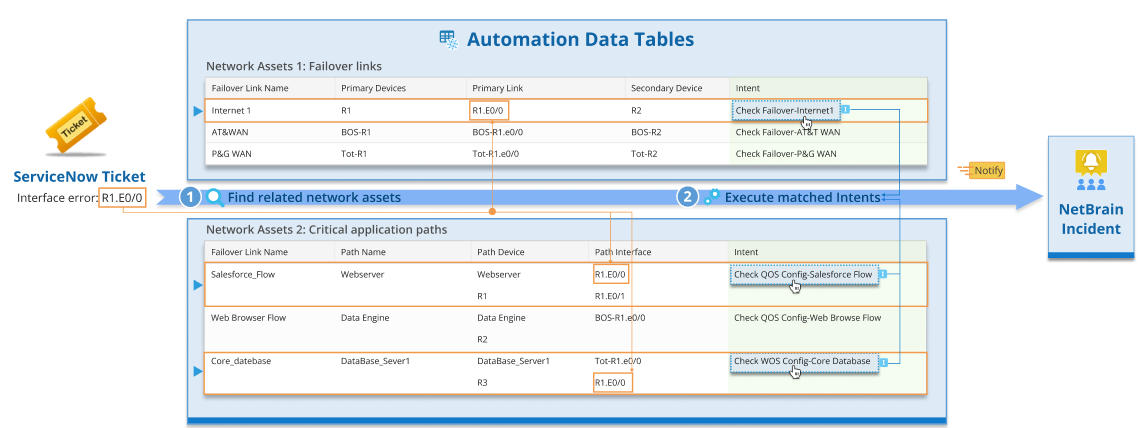
The following diagram illustrates how ADT-based PDAS works in PAF (see Preventive Automation via ADT for more information):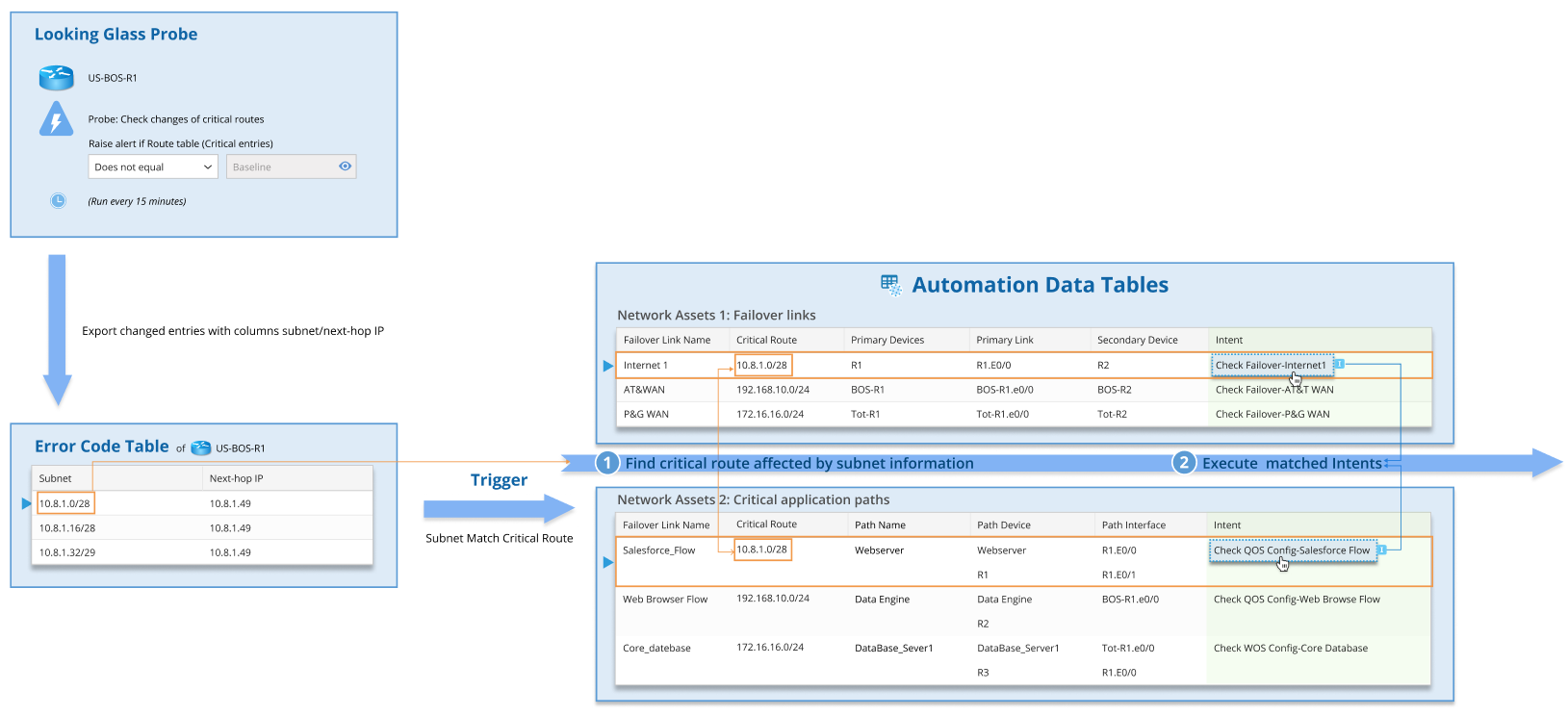
How is ADT Applied to NetworkBrain PDAS?
After ADTs are created, ADTs can be applied to PDAS.
The main steps in a typical ADT-based PDAS flow include:
- Install ADT into PDAS (By power user):
- Install ADT intents to Triggered Automation (to match the incoming incident type).
- Install ADT intents to Preventive Automation (for NetworkBrain probes).
- Install ADT to Auto Intent to deliver intents/maps/paths for troubleshooting problem devices on the map.
- Use ADT intents in the Bot for self-service automation.
- Use ADT intents for follow-up intent diagnosis in network intent.
- Use ADT in Intent Diagnosis interactively (By power user)
- Check ADT Intent Results in ADT or Incident Pane (By end user):
- Check ADT intent Results in Incident Pane.
- Check ADT intent Results in ADT Manager.
ADT-based PDAS
ADT serves as a data reservoir in NetworkBrain. It can be used across functions to provide data for the proper operations. This section will describe how ADT works with TAF, PAF, Auto Intent, Chat Bot, and follow-up Intent Diagnosis.
Install ADT Intents to Respond to Network Events from Ticket System

 |
Note: The ADT is ready to be used in TAF only after it is installed in Triggered Automation Manager. For more information, see Install ADT in Triggered Automation Manager. |
To achieve this goal, configure the settings in Triggered Automation Manager.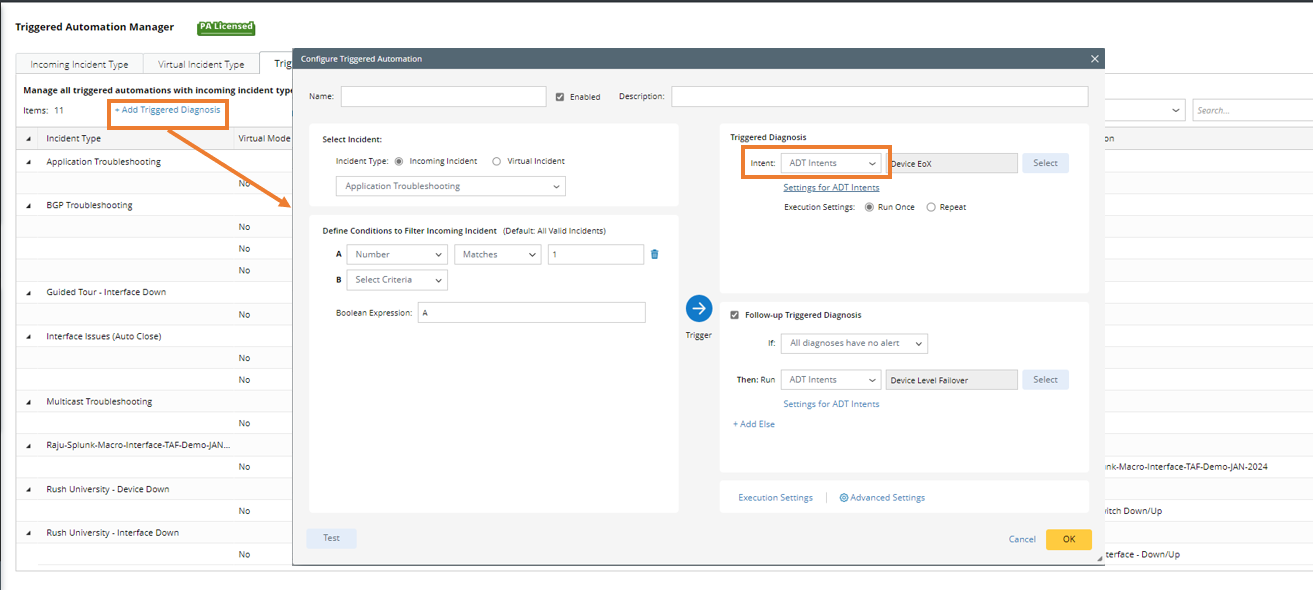
Install ADT Intents to Preventive Automation
ADT can be installed in Intent Based Automation Center for preventive automation. In this process, ADT is associated with primary probes and secondary probes. When the monitoring probes detect any Network changes or errors, the automation assets in ADT will be executed to prevent potential network problems. The following diagram illustrates how ADT operates in PAF. For more information, see Preventive Automation via ADT.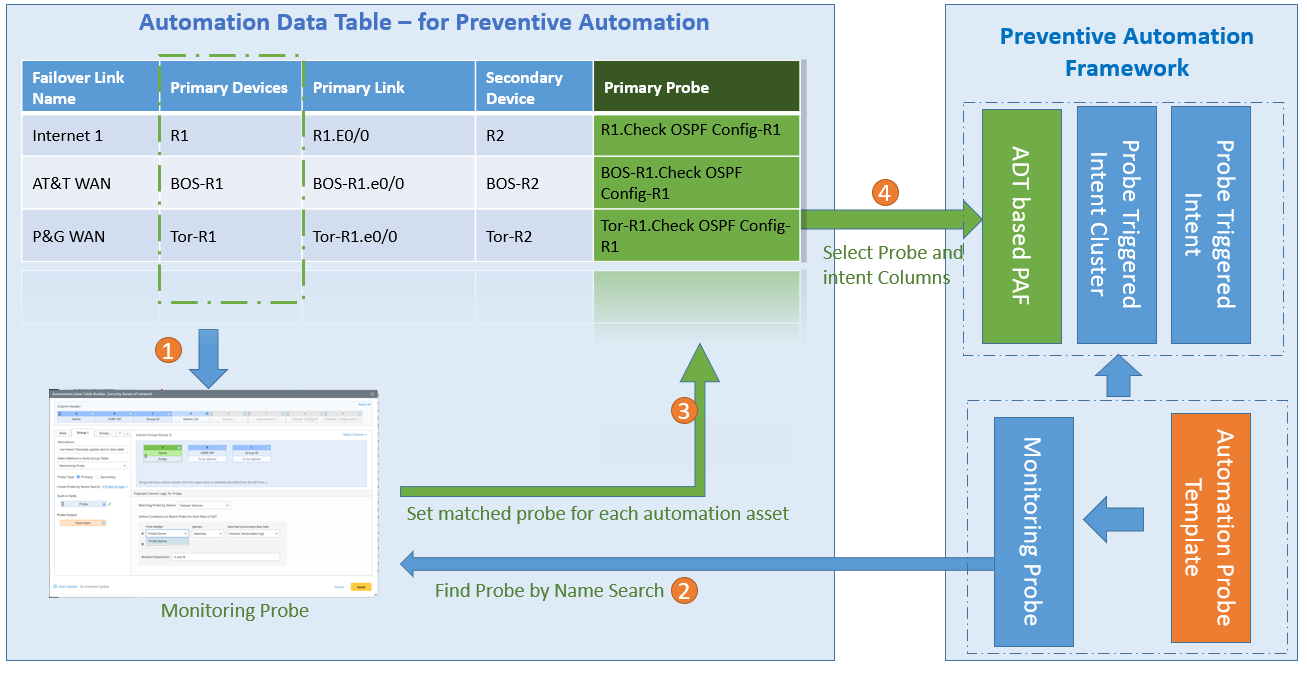
Install ADT to Auto Intent to Deliver Intents/Maps/Paths for Problem Devices on Map
In the Intent Based Automation Center, select the ADT from the left pane and define the relevant logic to deliver the intent/map/path in the right pane. For more information, see Enable ADT Assets for Auto Intent.
Use ADT Intents in Bot for Self-Service Automation

Use ADT Intent for Follow-up Intent Diagnosis in Network Intent
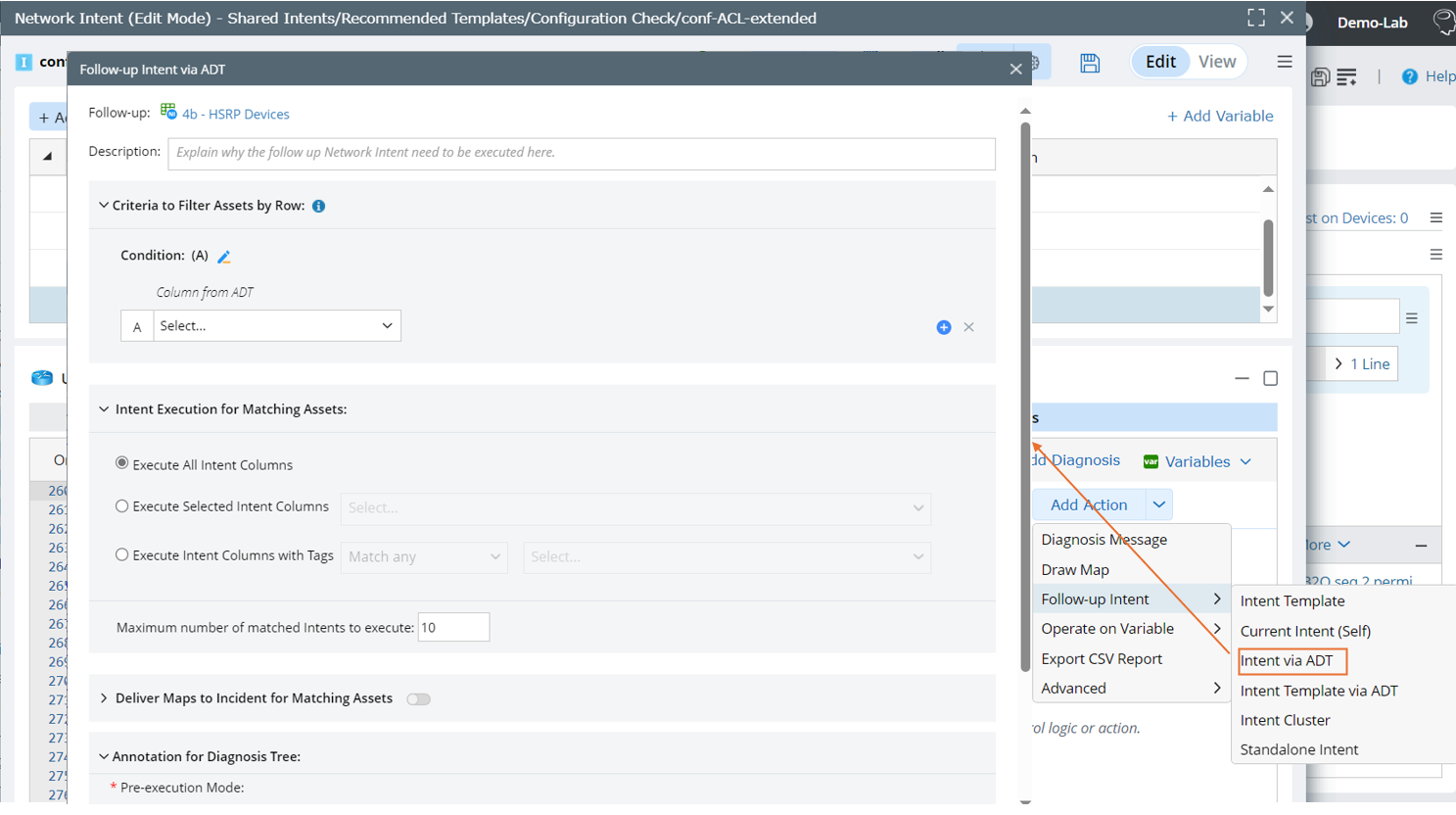
- Find automation assets by intent fields (Context Device or other Device Variables).
- Select the intent of automation assets to be executed.
 |
Note: For more information, see Use Intent from ADT as Follow-up Diagnosis. |